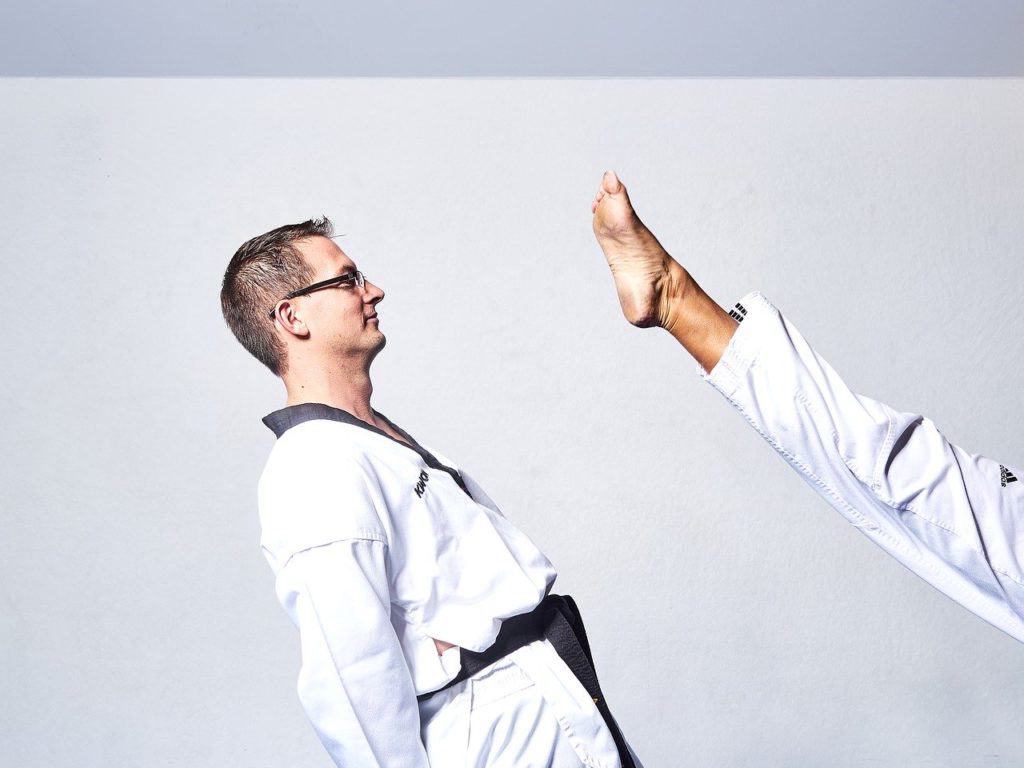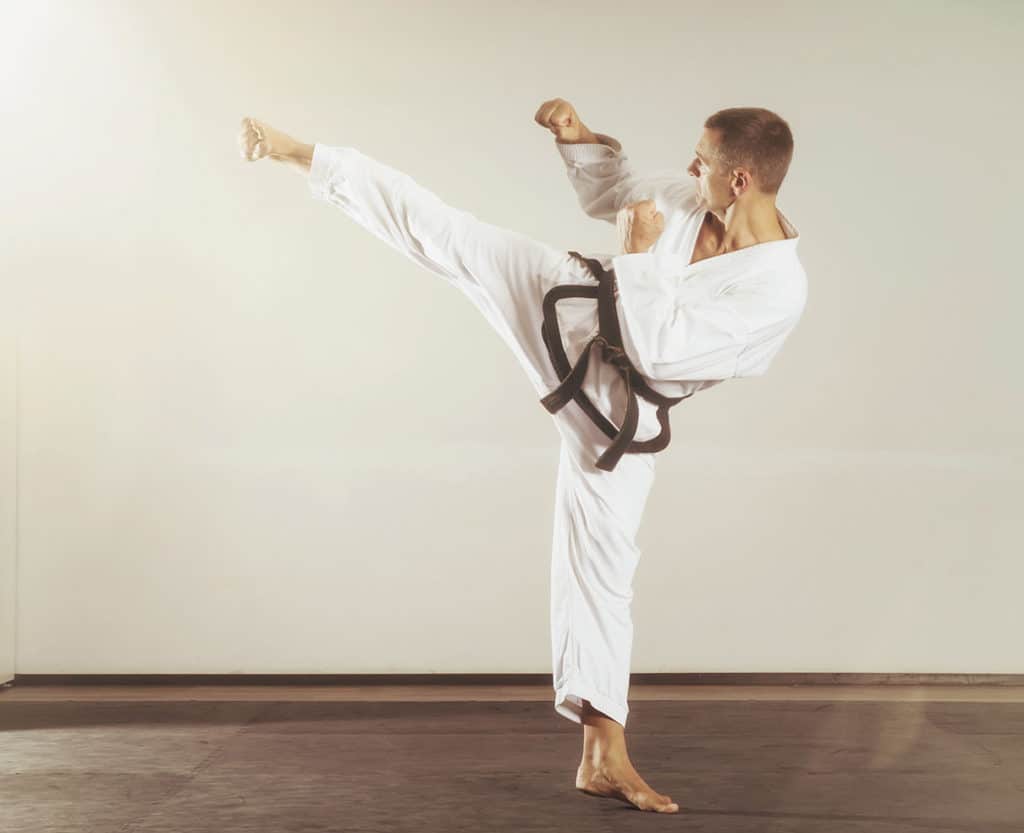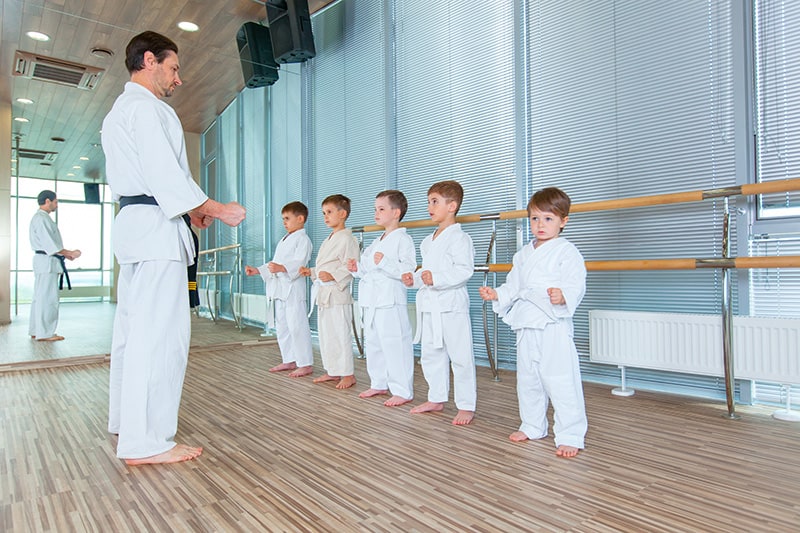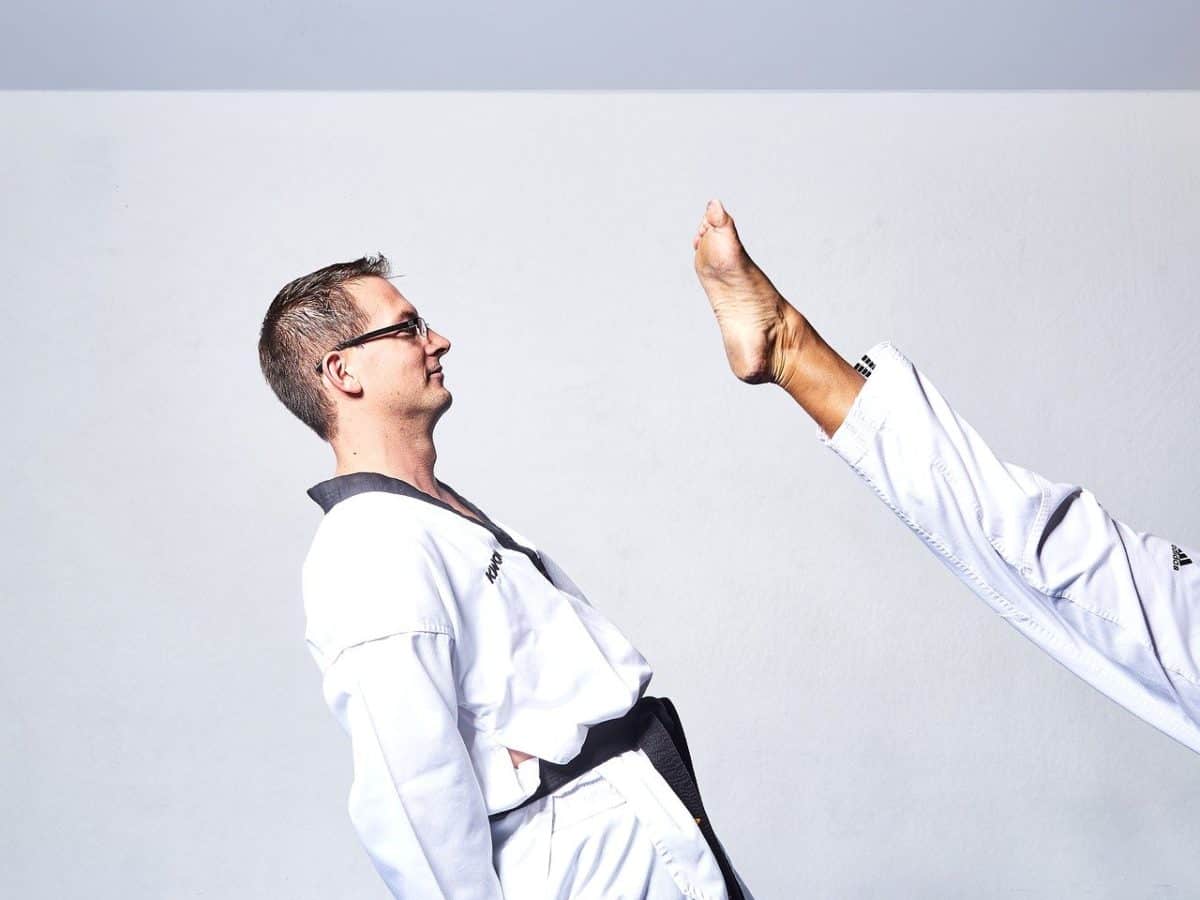
Knowing why training in Taekwondo is done barefoot can better help you understand this Martial Art. There are actually a number of reasons why these martial arts are typically practiced barefoot, and many of them are perfectly legitimate.
Why is TaeKwondo practiced in barefoot? Taekwondo is a Martial Art of tradition and instructors respect this history. However, training in barefoot also helps with muscle training and your mental attitude as well supports health and safety.
Let’s learn some of the most common justifications for practicing martial arts like TaeKowndo barefoot.
TaeKwonDo Tradition
A common answer you’ll hear is that it is tradition. They have you practice barefoot because that’s how they always did it. You may hear other answers in addition to this, but the instructor may not need to tell you these. Or you may learn about Asian history.
For example, purity/sanctity rules in Asian meant that you don’t wear outdoor shoes inside spaces like the dojo. This also means you don’t wear the shoes you wore in the bathroom into the rest of the home. It is considered rude and even dangerous.
Thus people didn’t wear shoes inside buildings like a dojo or temple where you learned martial arts. For instructors who share that culture, walking inside wearing your street shoes is considered incredibly disrespectful.
Teacher’s Preference
Instructors have a legitimate reason to want to see you practice stances and kicks barefoot. That would be to allow them to see your feet. Are you pointing your toes correctly as you kick? Is your weight properly distributed as you prepare to absorb a blow? A student standing on their toes or putting too much weight on their heels is easier to knock over.
Traction in Taekwondo Training

Practicing barefoot can improve your traction on the floor. You can feel when the floor is wet, so you’re less likely to try a high kick or other acrobatic moves when you won’t be able to land safely.
A side benefit is that it makes you more aware of your surroundings. You’ll have a better grip on the floor when doing kicks in bare feet, too.
Muscle Training
Taking off your shoes forces your feet and ankles to work harder. It makes your body work harder to maintain stability, balance and posture. That contributes to a stronger core and better balance long-term.
You’ll also get more accurate feedback from your body when you’re pushing your limit, something you may not notice if you’re wearing padded shoes that absorb blows. A side benefit of training barefoot is that you’re equally able to act whether you’re caught barefoot or fully dressed.
You’ll have already developed the strong, flexible feet necessary to maintain a strong stance and deliver a powerful punch or kick.
The Cost-Benefit Analysis
This is a greater factor for Taekwondo instructors than other martial arts instructors. The Taekwondo mats are prone to wear and tear faster than others because students are doing so many kicks and spins. That damage occurs faster if students are wearing shoes.
Requiring people to practice barefoot can be for their financial benefit, as well. One point in favor of Taekwondo is that all you need is a uniform and an instructor. You can get started without any additional equipment.
If the instructor required special shoes, they’d lose some potential students who can’t afford that or whose parents are reluctant to invest in gear that may not be used again. After all, who is going to wear tabi socks anywhere but the dojo?
The Proper Taekwondo Mental Attitude

One of the key tenets of Taekwondo is that your standing is based on merit. You advance through the ranks based on merit. And you’re equal to everyone else in the class at that same level.
The martial arts tend to put everyone in uniform to remove personal expression as well as to mentally separate the students from their prior associations. It is almost the opposite of going to the gym and seeing people wearing 100 dollar engineered tights and designer tennis shoes.
And that is why students are often asked to go barefoot instead of buying expensive martial arts shoes. Same outfit, same bare feet, and the only difference is the instructor’s black belt and position at the front of the room.
Furthermore, training in bare feet forces you to focus on your surroundings. Where are your feet located? What is the texture of the floor? The physical feedback through your feet is intense, and it keeps your mind on everything around you. For example, you’ll feel it when you make impact when you kick someone.
Health and Safety
Going barefoot may be a matter of health and safety. You’re less likely to hit them harder than necessary, because you can feel the impact. This actually reduces the risk of injury for the person being hit. That’s essential when students are just training.
A classic example of the opposite problem is seen in boxing. Because people wear padded gloves and helmets, they often give each other concussions, leading to brain damage, because the blows don’t seem that bad. A practice head kick by someone in barefoot is less likely to cause serious harm compared to being kicked by someone wearing shoes.
Asking people to go barefoot also minimizes the amount of debris they track into the building. When there’s less dirt and debris on the floor, people are less likely to slip on it. That’s also an incentive for people to sweep the floor regularly. They’ll always feel wet spots and clean it up rather than risk slipping and falling.
People are more likely to notice damaged mats, too, and replace them rather than practice on them. A side benefit of having everyone walk in barefoot is that they are less likely to cross the mats in cleats or high heels, causing even worse damage than regular shoes.
And when you take your outside shoes off before entering the dojo, you can’t track mud and debris across the floor that could hurt someone who falls on it.
Students who practice for extended periods may learn that going barefoot spares them the problems other sports bring like smelly socks and athlete’s foot.
Final Thoughts
It is common to learn Taekwondo and other martial arts barefoot, and there are plenty of legitimate reasons to do so. However, you may learn martial arts wearing special shoes. Just realize what you might be losing by doing so.


